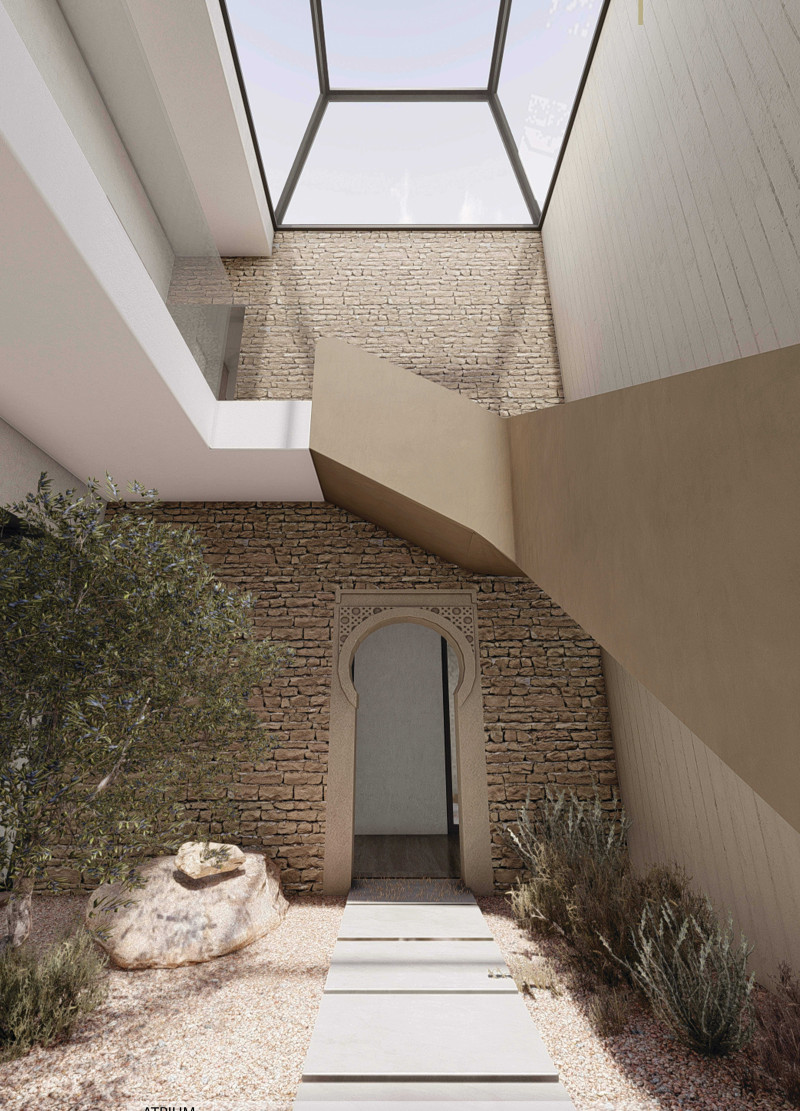5 key facts about this project
Visitors to the site will be greeted by a façade that reflects a harmonious balance between contemporary aesthetics and local architectural vernacular. The choice of materials plays a significant role in this balance, with a blend of seasoned timber, durable concrete, and glass that allows natural light to permeate the interiors while maintaining a connection with the exterior environment. This deliberate selection contributes not only to the visual appeal of the structure but also emphasizes sustainability, as the materials are chosen for their durability and their low environmental impact.
The layout of the project is meticulously planned to encourage interaction among its users. The ground floor features open commercial spaces that seamlessly flow into vibrant public areas, fostering a sense of community. By designing these spaces to be dynamic and multi-functional, the project accommodates a variety of activities, from casual gatherings to formal events. The upper levels are dedicated to residential units, designed to provide inhabitants with a sense of privacy while still enjoying the benefits of communal living through shared amenities.
Unique design approaches include the incorporation of landscaped terraces and green roofs that not only enhance the aesthetic qualities of the project but also contribute to its thermal performance and biodiversity. These features encourage urban wildlife and improve air quality, highlighting a commitment to creating an architecture that respects and enhances its natural surroundings. Such initiatives reflect a growing awareness of ecological responsibility within architectural design.
The internal configuration further demonstrates thoughtful planning, emphasizing open floor plans that maximize flexibility and adaptability. The transition between spaces is designed to be fluid, with expansive openings that connect living areas to outdoor spaces, ensuring that residents can enjoy their environment. This interplay between indoor and outdoor spaces is complemented by strategically placed windows that offer panoramic views and naturally illuminate the interiors throughout the day.
In terms of structural design, the project utilizes a combination of advanced construction techniques that enhance both stability and efficiency. The innovative use of cantilevered elements provides visual interest while also responding to the functional requirements of the space below. Additionally, the framing system is designed to optimize resource efficiency, minimizing waste and ensuring that the construction process adheres to sustainable practices.
Overall, this architectural project stands out for its attention to detail, cohesive design language, and its ability to respond to both human needs and environmental contexts. By thoughtfully merging modern design sensibilities with traditional elements, this project represents a significant contribution to contemporary architecture. It acts as a model for future developments, showcasing how thoughtful design can enhance both community living and ecological sustainability. Readers are encouraged to explore the architectural plans, sections, designs, and overarching ideas to gain a more profound appreciation for the intricacies and intentions behind this project.


























